Overall, the Honda Accord’s reliability is outstanding. But how do you choose the best Accord? We’ve done the research & break it down by generation.
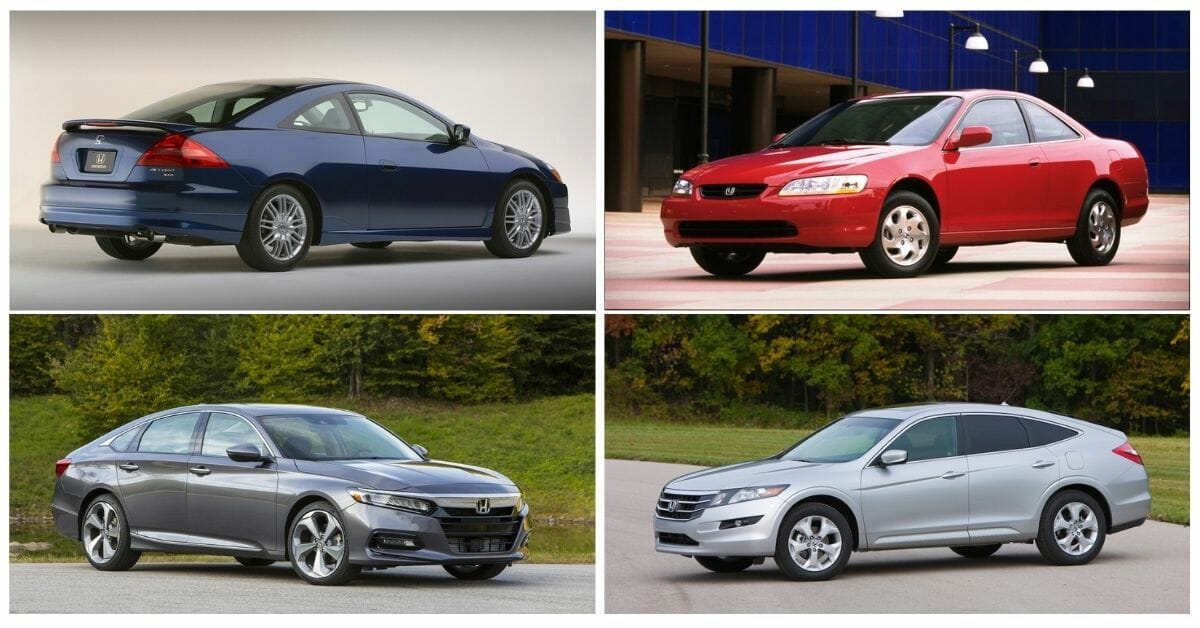
Since the 1980s, the Honda Accord has been one of the top-selling cars in America. Generally available as a four-door sedan and a two-door coupe, the Accord is currently on its 10th generation after over 40 years of production.
In that time, the Honda Accord has grown from a compact to a mid-size car and has remained the higher end, larger model when compared to the automaker’s other popular vehicle, the Honda Civic.
The Accord’s most direct competitor is the Toyota Camry, although the Accord arguably has sharper driving dynamics and more exciting styling than the Camry.
The Civic was Honda’s attempt to create a four-wheeled cab. And the Accord concept was taken upmarket, with a similar efficient four-cylinder engine mounted transversely and driving the front wheels.
So, if your budget won’t stretch to a new Honda Accord, how do you choose the best pre-owned Accord? We’ve done the research for you, and the following article breaks down the most recent Accord generations–those sold in the last 20 years–while delving into design features and significant recalls as well as expert and owner reviews.
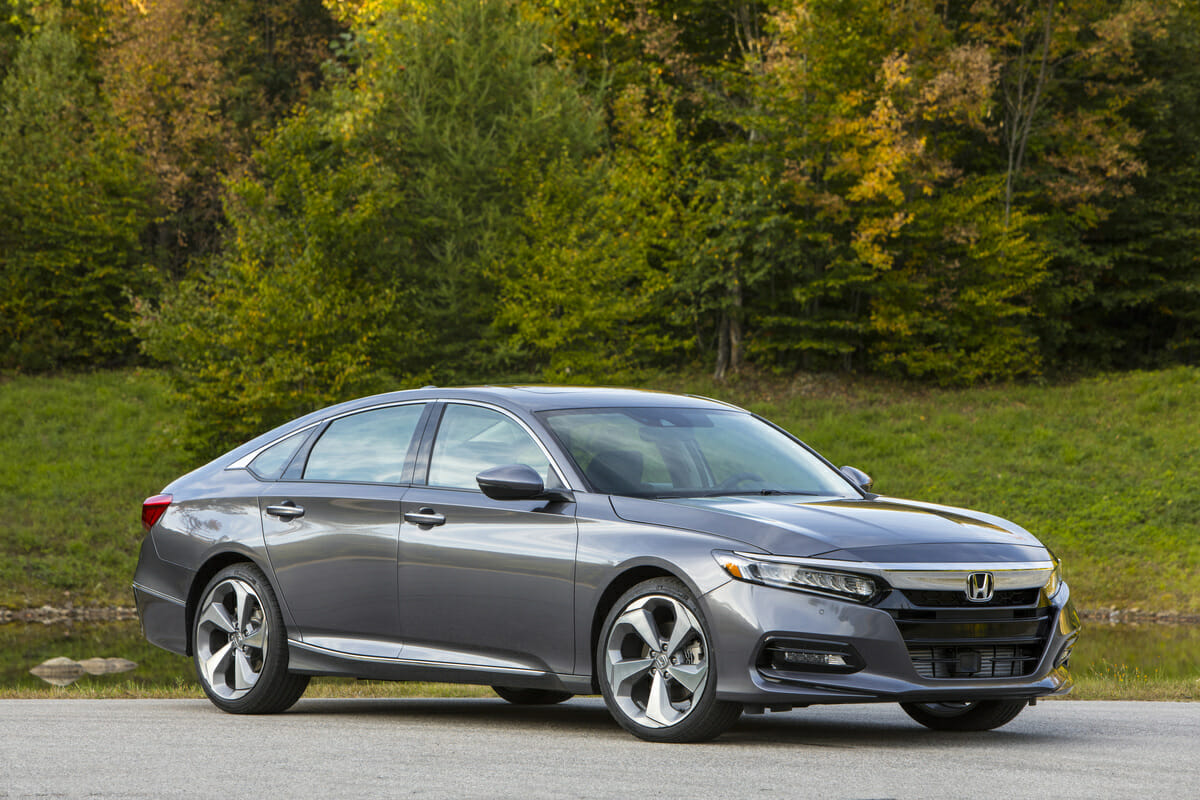
Honda Accord Tenth-generation (2017-Present)
The 10th-generation Honda Accord was launched in 2017 as a 2018 model in the U.S. Toshinobu Minami and Yosuke Shimizu designed it. For the first time, the Accord was available only as a four-door sedan.
The Accord has always been noted for delivering luxury car technology at mid-range pricing. New features for the 10th-generation included parking sensors, magnetorheological dampers, and a head-up display. The powertrains on offer are a 192 hp 1.5-liter turbo-four, paired with a six-speed manual or CVT (Continuously Variable Transmission), and a 252 hp 2.0-liter turbo-four, paired with a six-speed manual or 10-speed automatic.
The 212 hp Honda Accord Hybrid went on sale in March 2018. Its lithium-ion battery is mounted under the rear seat.
Honda has used advanced materials to save weight and increase rigidity in the 10th-generation Accord. Structural adhesives are used for the first time, and the hood, bumpers, and some suspension parts are aluminum.
This generation of Accord has been subject to some recalls, mostly around preventing potential electrical and software issues. The 2018-2019 MY Honda Accords have a recall to replace the fuel pump.
The 2018-2020 Accords require a software upgrade to avoid an issue with the Body Control Module, which can stop electrical components like lights and wipers from functioning. The 2018 Accords also had a recall for backup cameras, and 2020-21 Honda Accord Hybrids have a recall for power converter issues.
The Honda Accord was one of the Insurance Institute for Highway Safety’s Top Safety Picks for 2019 and had the top five-star safety rating from NHTSA.
- NHTSA: 2017 Honda Accord Safety Rating & Recalls
- NHTSA: 2018 Honda Accord Safety Rating & Recalls
- NHTSA: 2019 Honda Accord Safety Rating & Recalls
- NHTSA: 2020 Honda Accord Safety Rating & Recalls
- NHTSA: 2021 Honda Accord Safety Rating & Recalls
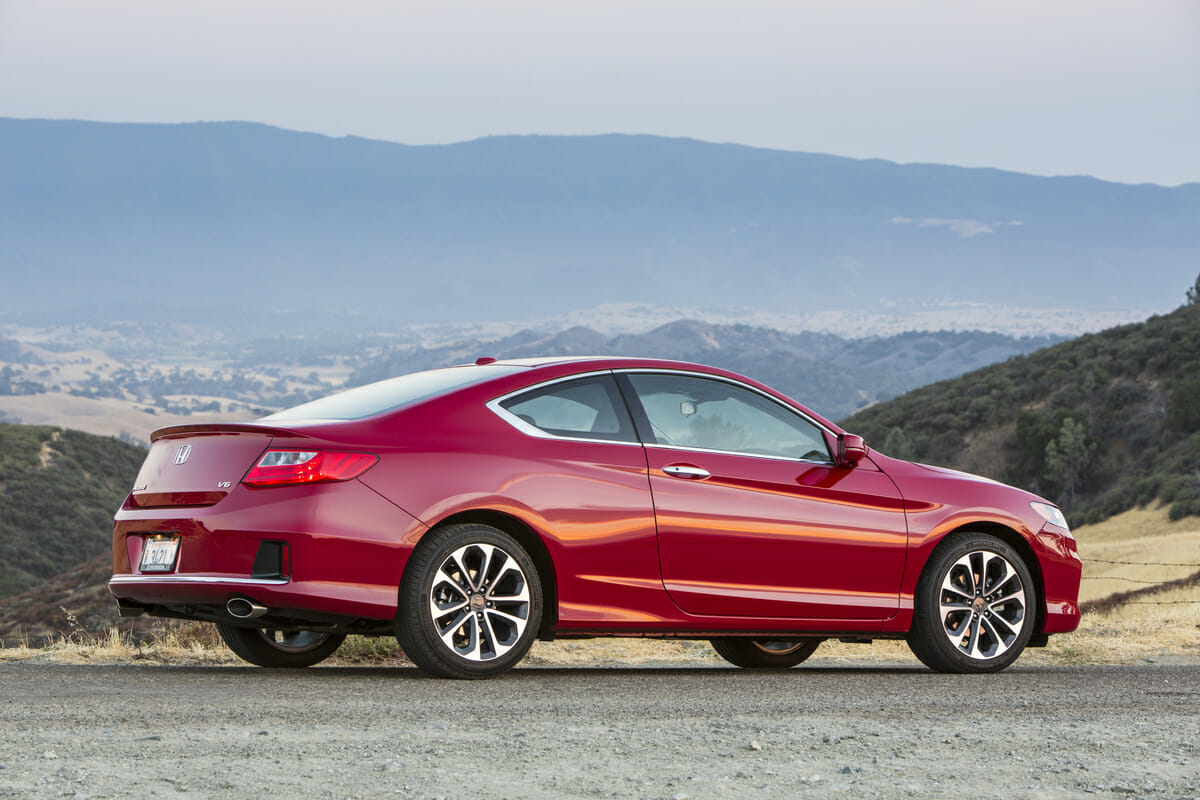
Honda Accord Ninth-generation (2013-2017)
The ninth-generation Honda Accord was first revealed as a coupe at the 2012 North American International Auto Show in Detroit, the first cars going on sale in September of that year.
Power comes from a 185 hp 2.4-liter four-cylinder and a 278 hp 3.5-liter V6 engine paired with a range of transmissions, which depending upon the model include a CVT; traditional five- and six-speed automatics; and six-speed manual transmission are available.
The availability of manual transmission makes the ninth generation of the Honda Accord a compelling choice for driving enthusiasts, especially since manual transmissions are so rare amongst Accord’s competitors, such as the Toyota Camry and Hyundai Sonata.
The Hybrid version of the eighth-generation Honda Accord is EPA-estimated at 50/45 mpg in city and highway driving, respectively, (47 mpg combined), although some drivers report better than 50 mpg. The Hybrid has unique frontal styling.
Overall, Accords can be considered highly reliable, and this generation is no exception. However, there have been several recalls. One was an inspection of the driveshafts to ensure there was no corrosion, while another relates to a sensor issue on the battery.
More seriously, some Accords made from January 2013 until April 2013 required replacement gas tanks due to an error during manufacturing. 2014 and 2015 Accords have also been subject to a recall involving a Connecting Rod Torque Error – fundamentally, the engine was not bolted together correctly. For some Accords, the solution was a new short block, a replacement of the engine’s core.
This generation of Accord also received a Five Star safety rating from NHTSA.
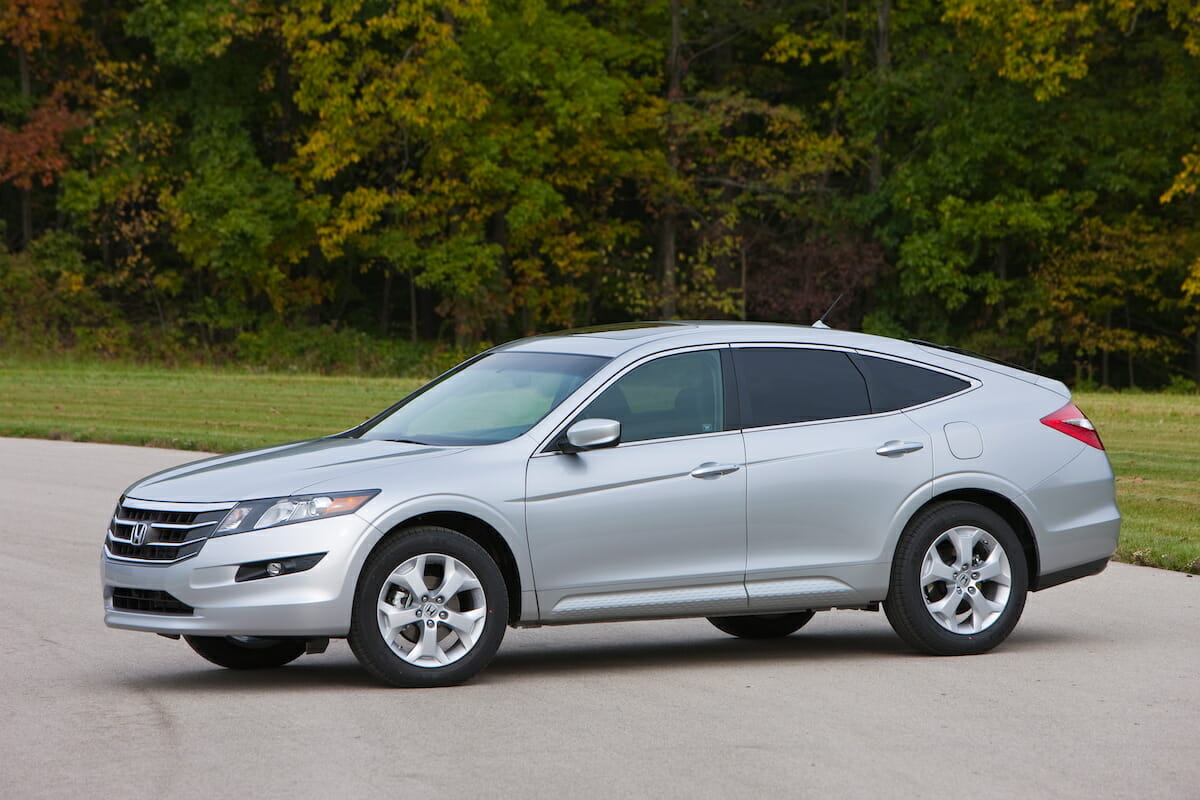
Honda Accord Eighth-generation (2008-2012)
Recognizing that different markets had different requirements, Honda developed two basic versions of the eighth-generation Accord. The U.S. market version had a larger body, while the European and Japanese market Accord sold in the U.S. as the Acura TSX.
The eighth generation has eye-catching, edgy styling, with a very distinctive character line running from the front wheel arch under the sizeable curved door handles and on into the taillights. U.S. cars were built in Marysville, Ohio, the first cars rolling off the line in mid-2007. In 2009, the Accord Crosstour was launched to capitalize on the growing crossover space. The Crosstour has raised suspension and a large hatchback trunk.
Accord engines included two 2.4 liter four-cylinder units, one producing 177 bhp and the other 190 bhp, and a 272 bhp 3.5 liter V6. The V6 featured Honda’s cylinder deactivation technology, known as VCM (Variable Cylinder Management), which delivered a four mpg improvement in the economy. No hybrid was offered.
Equipment available on this generation of Accord included keyless entry, electronic stability control, advanced anti-lock brakes with brake assist and electronic brake-force distribution, and leather upholstery on some models. A 2011 facelift introduced some trim changes, a new fascia, and updated taillights. The Accord retained its Five Star safety rating from NHTSA.
Many cars of this age were affected by a recall to replace faulty Takata airbags. 2003-12 Accords were doubly affected since the replacement airbags were not correctly fitted, and the second round of recalls had to be issued. When looking at cars, it would be advisable to confirm this recall around a critical safety component has been carried out.
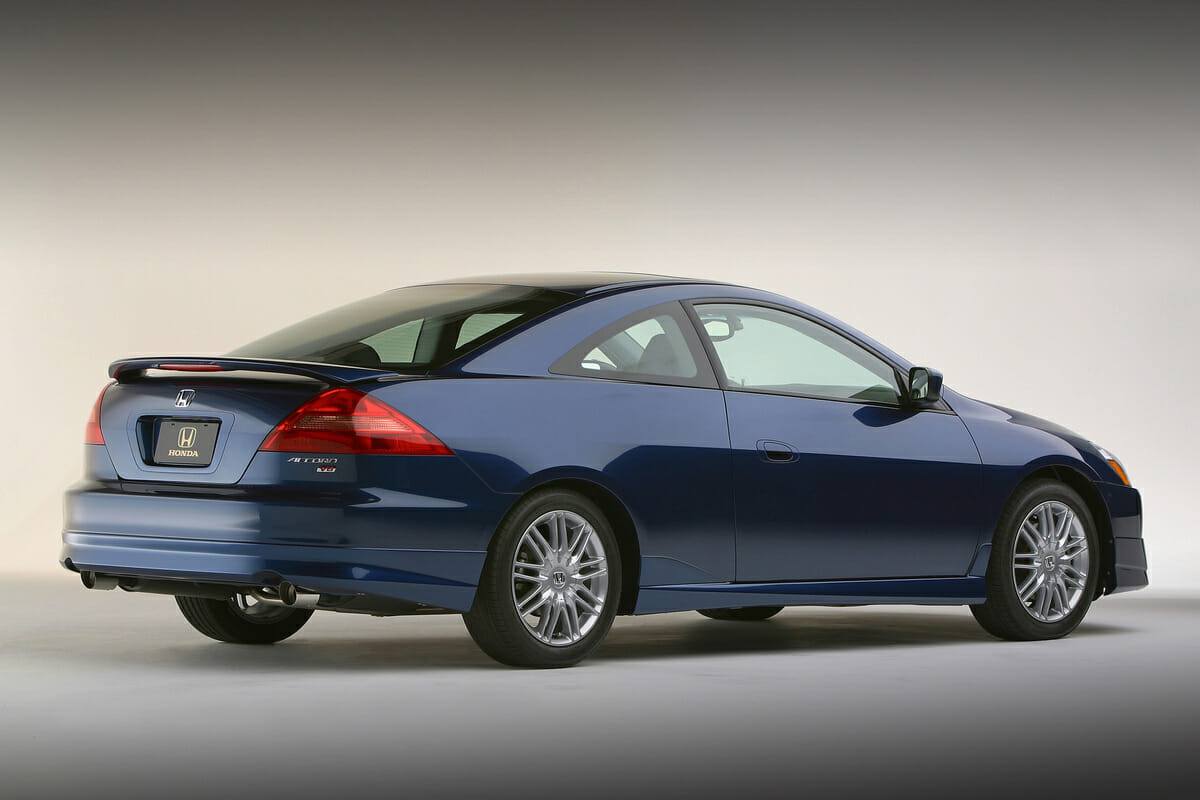
Honda Accord Seventh-generation (2003-2007)
Like it did with the eighth-generation, the automaker designed two separate models for the seventh-generation Honda Accord: one for the Japanese and European markets, and the other for North America. (The Japanese and European model sold in North America as the Acura TSX).
Production began in 2003. A larger car than its predecessor, the North American Accord was given a new level of refinement with an interior featuring a noticeably better quality of materials. Four-cylinder models had a new K-series engine, with a coil-on-plug ignition system, previously seen on the V6, providing a slight horsepower and fuel economy gain.
One Accord four-cylinder model was the first production car in the world to meet California’s Super Ultra Low Emissions standards. Engines were of 2.0 liters, 2.4 liters, and 3.0 liters and produced between 160 and 244 hp, driving through a range of five and six-speed manual and automatic transmissions.
In terms of new technology available on this generation Accord, the 2003 model year debuted Honda’s GPS assisted Navigation system, and the 2005 facelift included six airbags.
The first Accord Hybrid was introduced, with an EPA gas mileage of 29 City/37 Highway and the same 3.0-liter motor as the regular V6 Accord models, but with power increased to 255 hp.
A form of stability control called Vehicle Stability Assist (VSA) was introduced to complement the traction control and brake assist systems.
Seventh-generation Accords are subject to the Takata airbag recall. They are also affected by the second round of recalls Honda issued following the replacement airbags’ incorrect fitment. Other recalls included a power steering leak on V6 models, a faulty ignition switch on some 2003 models, and a fuel pump relay issue on 2005 and 2006 models.
More seriously, some 2003 and 2004 model year Accords with automatic transmissions had problems with overheating, which resulted in transmission replacements for Accords that had been badly affected.
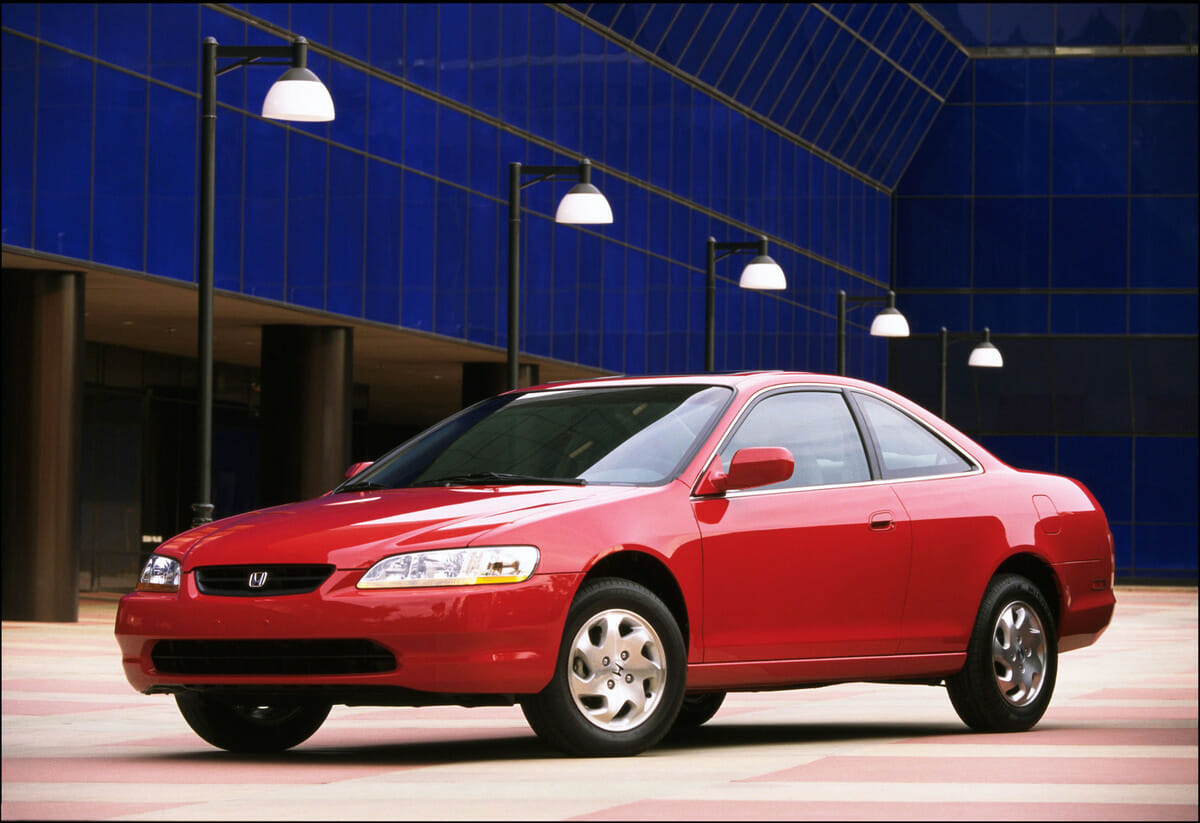
Honda Accord Generation 1-6 (1977-2002)
Early Accords, especially first-generation cars, are now collectible classics. Perhaps the most collectible Accord are the Gen Seven Type Rs, and two low production high power variants developed as part of Honda’s European racing program. Far more common are the millions of eighties and nineties Accords that survive daily use, illustrating their mechanical reliability and sheer durability.
When parts do need replacement, they are readily available and well-priced. Mechanics find them easy to work on and are likely to be familiar with Accords, making them among the very best choices for low-cost motoring.
Interiors appear amongst the most durable in the industry, with Accords with more than 150,000 miles or more often having interiors that may display some wear but have seats that are not split and remain firm and supportive.
The interior switches and stalks on many cars of this age/miles are often still fully functional, like fan motors and switches. The dash plastic and steering wheels do not crack with sun or time, although the surfaces become shiny and cheap-looking.
One weak point seems to be around the paint, with peeling clear coat an issue in sunny climates where cars live outside. This issue is age-related, in that cars less than five years old never display damage, while few older than fifteen years are blemish-free. This sun damage to paint can occur to Accords on the hood, roof, and trunk. The damage is unsightly, and if left untreated, Accords can begin to rust.
In places where the climate does not require the roads to be salted in the winter, it is not uncommon to see Accords 250,000 miles. In climates where the roads are salted, such as the U.S. midwest, rust corroding the body becomes a severe issue for all cars, Accords included, typically when they are around ten or fifteen years old.
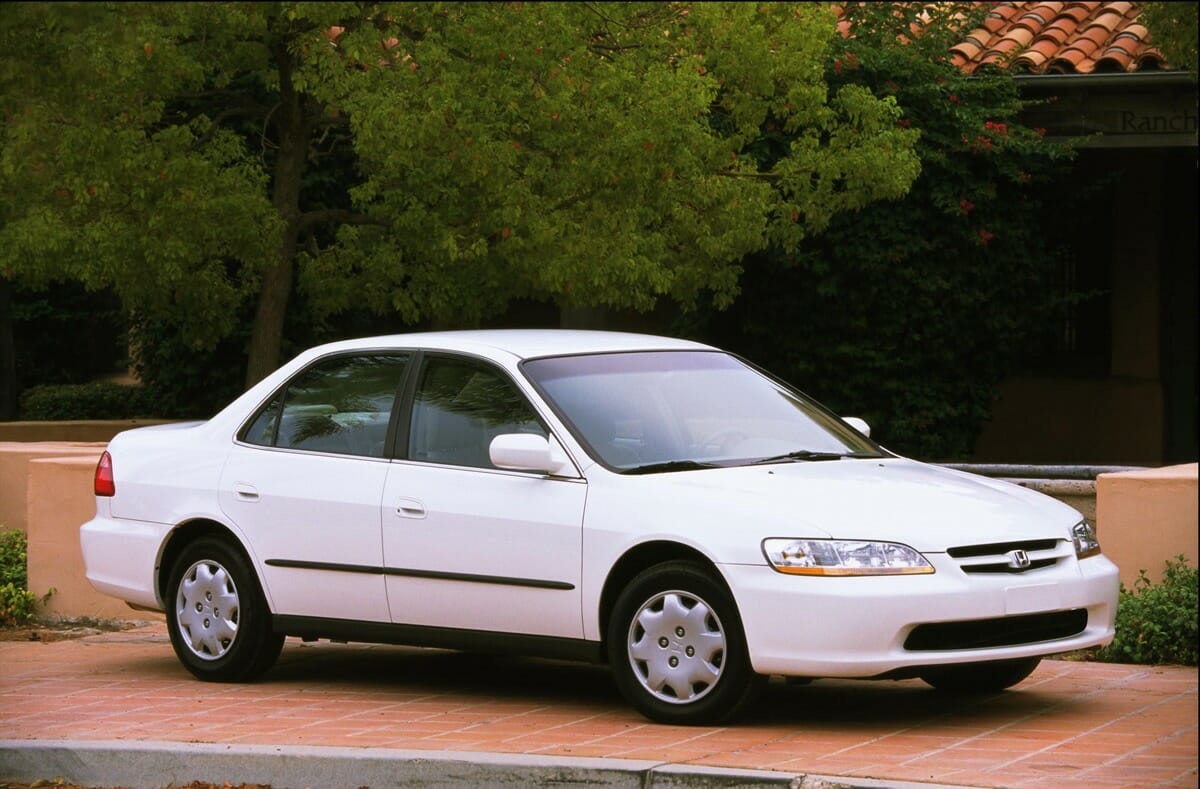
What is the Best Year of the Honda Accord?
When car shopping, it is usually best to begin by deciding on your budget. Due to the large supply of Honda Accords on the market, if you are diligent in your research and budgeting, it is possible to choose trim levels, engine size, transmission, color, and body style almost as quickly as when looking for a new car.
In general, the Honda Accord’s reliability is outstanding, although it certainly is always worth checking out if the vehicle you’re considering was affected by any recalls — most importantly, confirming that the two airbag recalls for any 2003-2012 Honda Accords has been done.
If you have the budget, a late-model 10th- generation CPO Honda Accord offers a sporty driving experience and stylish, contemporary design for under $20,000. Few other cars have the high-tech glamour of an Audi or a BMW yet price more like Ford or Chevrolet.
However, even if your budget is only $5000, there are many well-looked-after Accords with lots of life left in them. Older models are lighter on technology and safety but make up for their low purchase price.
The standout for reliability at this price point is the most straightforward Honda Accords, those with manual transmissions, four-cylinder motors, and not many complicated electric options. Coupes offer more style, the seventh generation benefitting from a striking taillight design, while the proportions of the eighth generation coupe have aged very gracefully.
It is also worth noting that the Accord has received a Five Star Safety Rating for each model produced since 2002. Safe, practical, reliable, and fun to drive, there is a lot to like in the Honda Accord.
Photos: Honda
